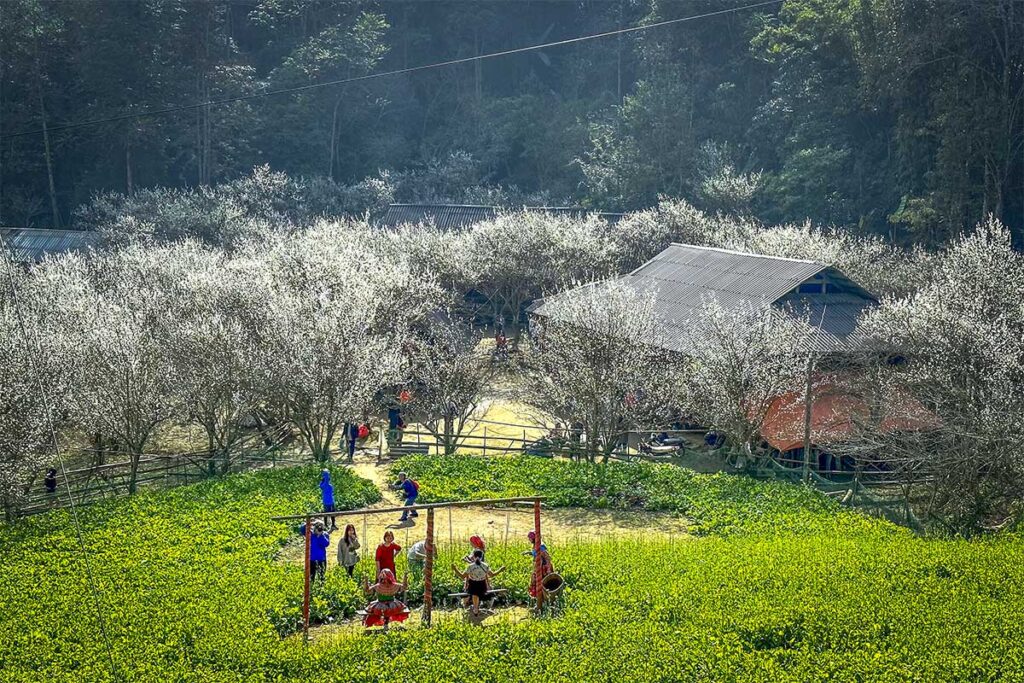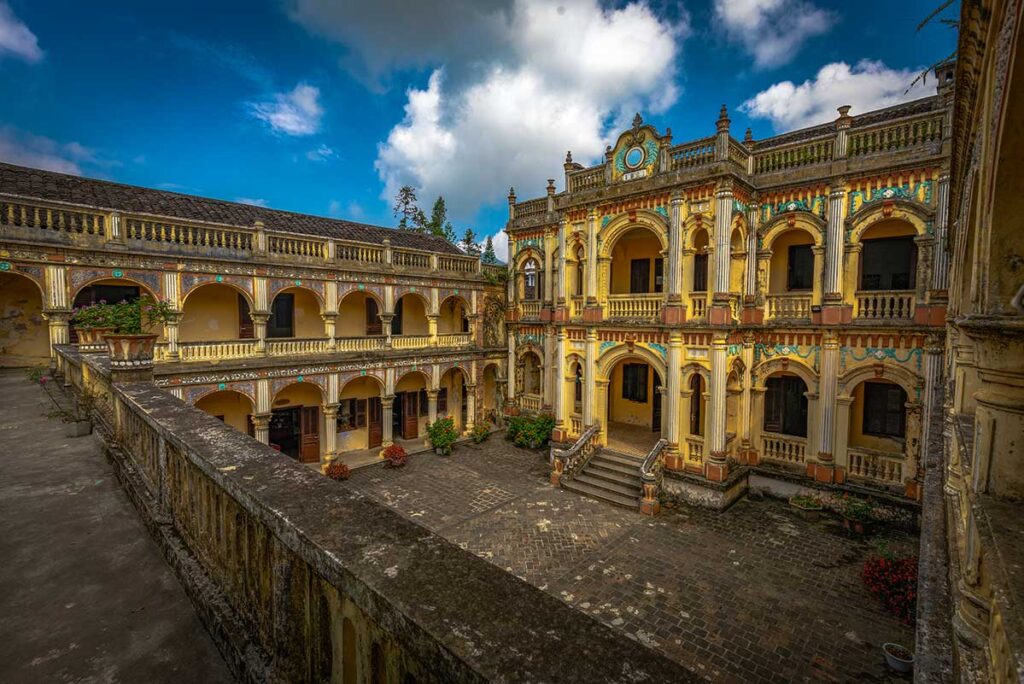History of Hoang A Tuong Palace
Origins and Purpose
Hoang A Tuong Palace was built between 1914 and 1921 by Hoang Yen Chao, a Tay ethnic lord who ruled Bac Ha during the French colonial period. Despite being commissioned by Hoang Yen Chao, the palace was named after his son, Hoang A Tuong, who was entrusted with managing the family estate. Designed by both French and Chinese architects, the palace served as a fortified residence and administrative center in what was then a semi-feudal system. The Hoang family became powerful through their control of trade routes, local taxation, and the distribution of goods—including opium and supplies for French forces in the region.
After 1950: From abandonment to restoration
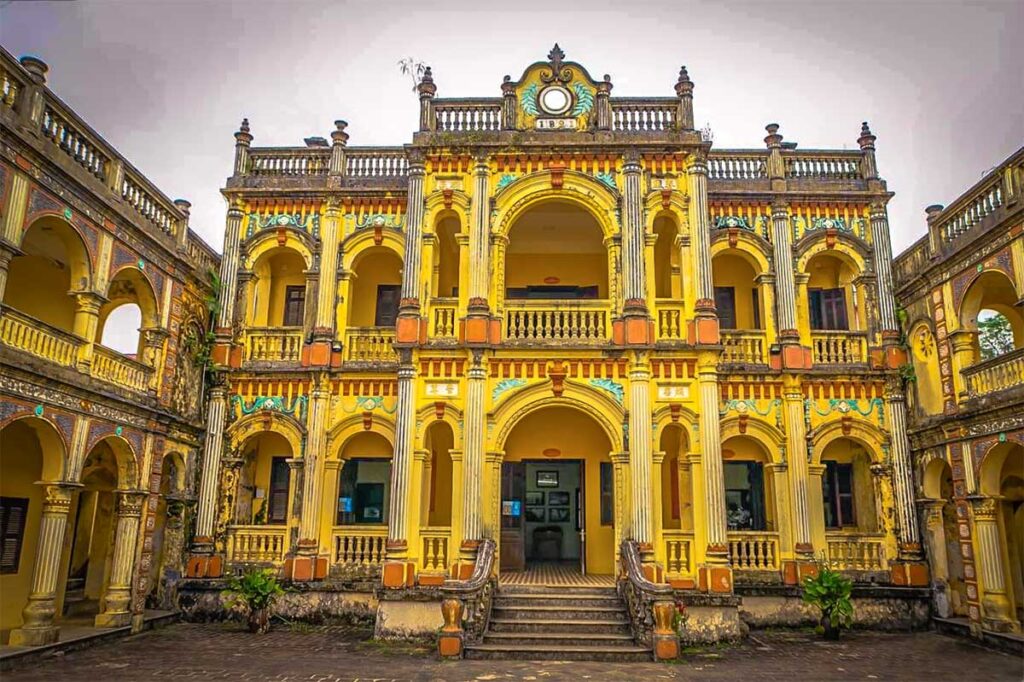
Following the fall of the colonial system and the family’s decline in 1950, the palace was left empty for decades. In 1999, it was officially recognized as a national historic and architectural site, marking the beginning of efforts to preserve and open the building to the public. Over time, some rooms were repurposed to showcase small exhibits about local ethnic culture and Bac Ha’s history, while the palace itself became a point of interest for travelers visiting the region.
Recent renovation and future plans
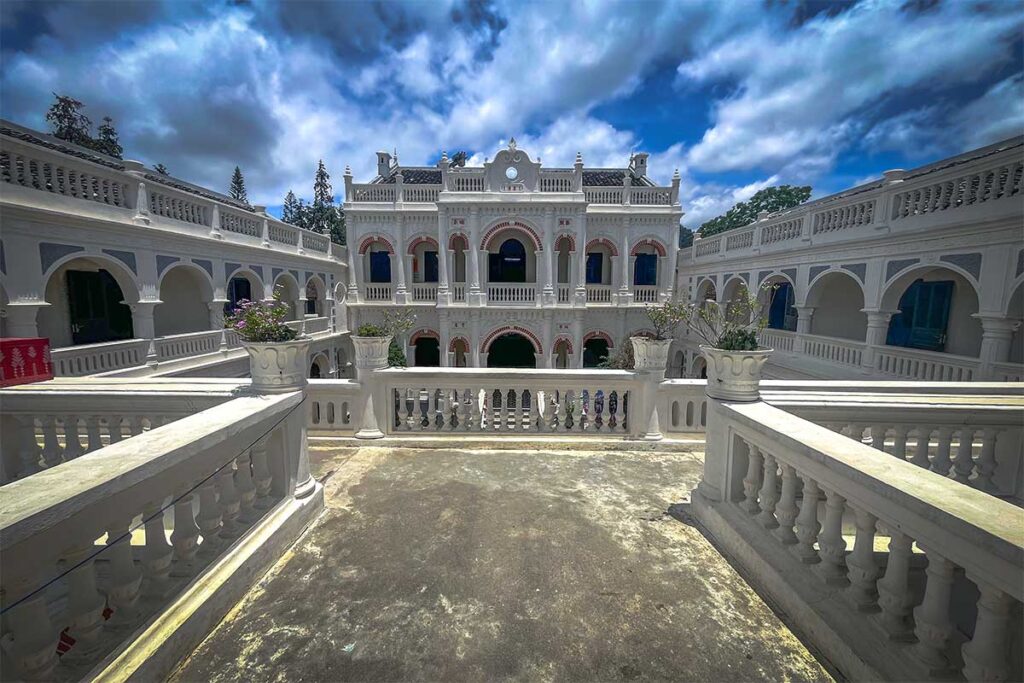
The palace has undergone gradual restoration, including a major repainting of the exterior in 2025. While this gave the building a fresher appearance, some visitors feel it reduced a bit of the original charm. During the renovation period, many rooms were cleared or temporarily empty, but this was likely part of an effort to upgrade the site into a more complete museum experience. Long-term plans appear to include new exhibits, improved signage, and expanded cultural displays to help bring the story of the palace—and the region—back to life.
Highlights & Architecture
1. The main mansion
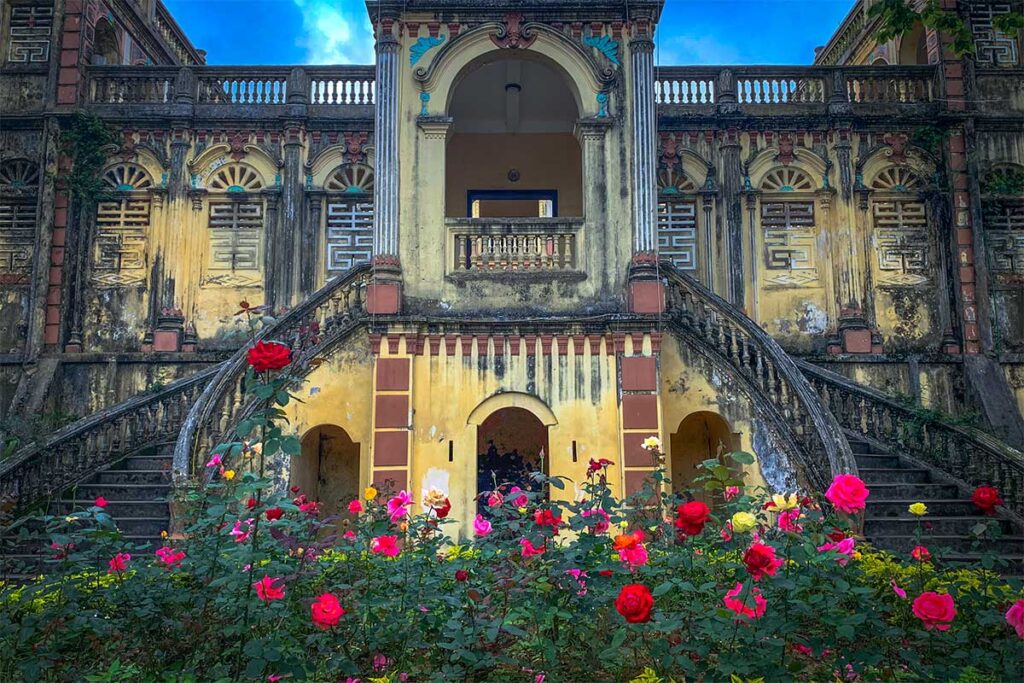
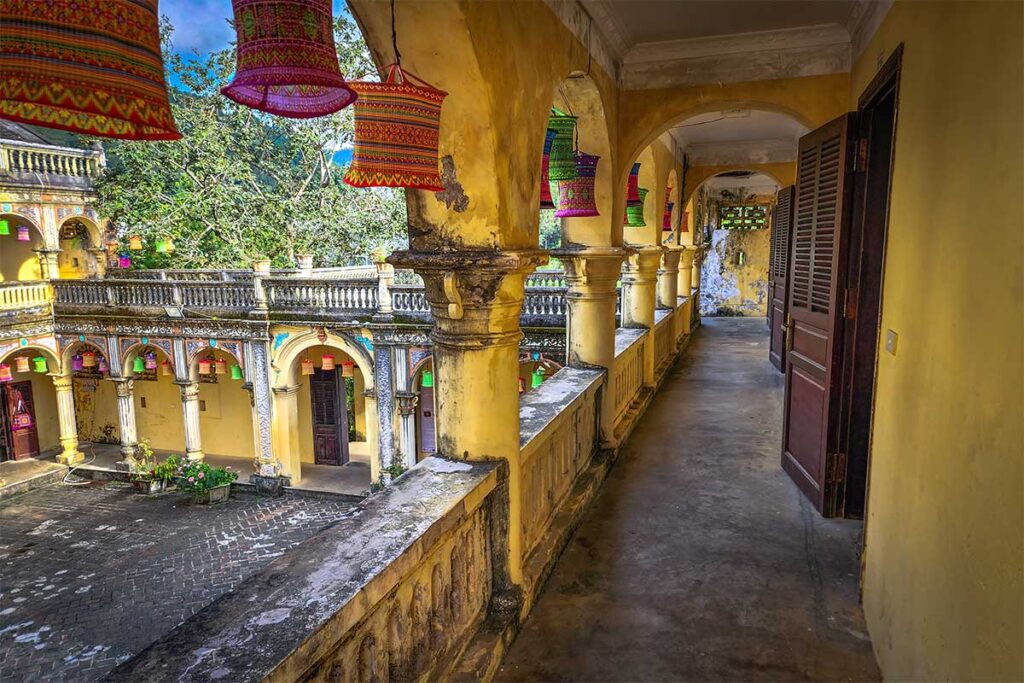
At the heart of the complex is a two-story colonial-style mansion, designed with symmetry and visual impact in mind. Twin staircases lead up to a broad balcony, flanked by arched windows, curved balustrades, and domed doorways.
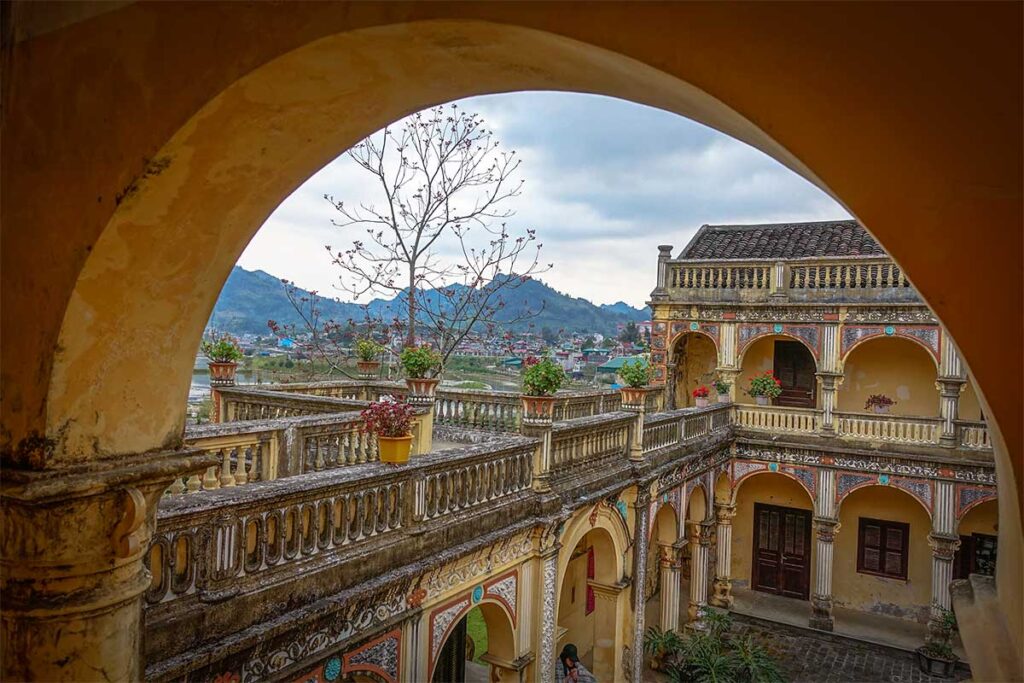
The central courtyard creates a sense of openness, while decorative details like laurel motifs add a distinctly European touch to the otherwise remote highland setting.
2. Other buildings and layout
Surrounding the main building are several smaller structures that once housed the extended household—wives, advisors, soldiers, and servants. These include rows of horizontal houses with two floors each, as well as basic two-story warehouses at the back. The entire palace is enclosed by fortified walls, complete with defensive lookout holes, highlighting its dual role as both residence and stronghold.
3. Interior exhibits
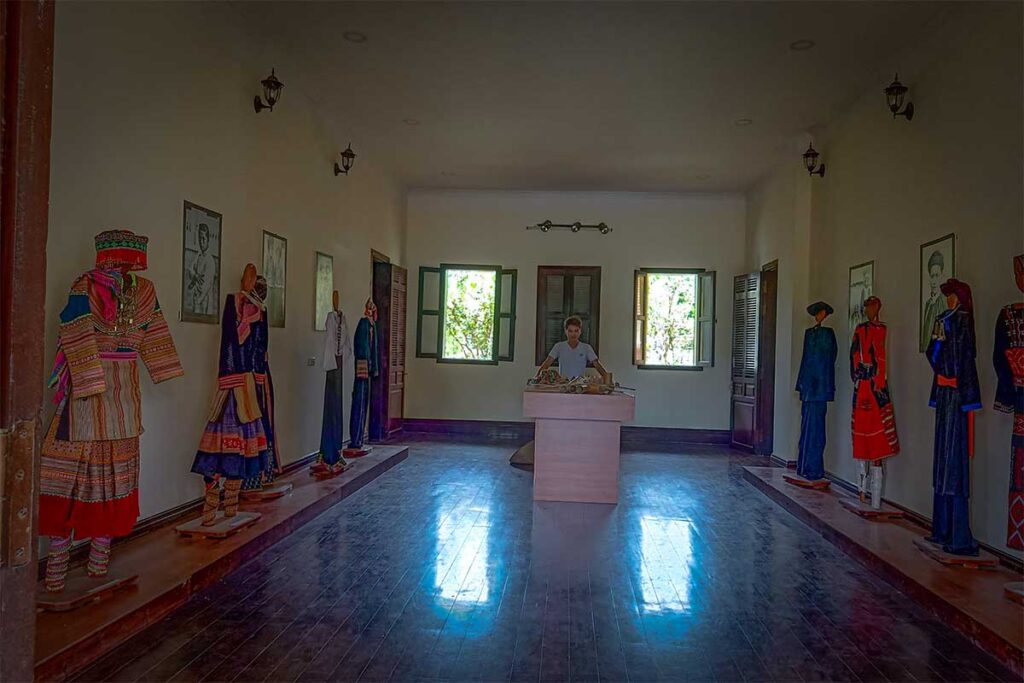
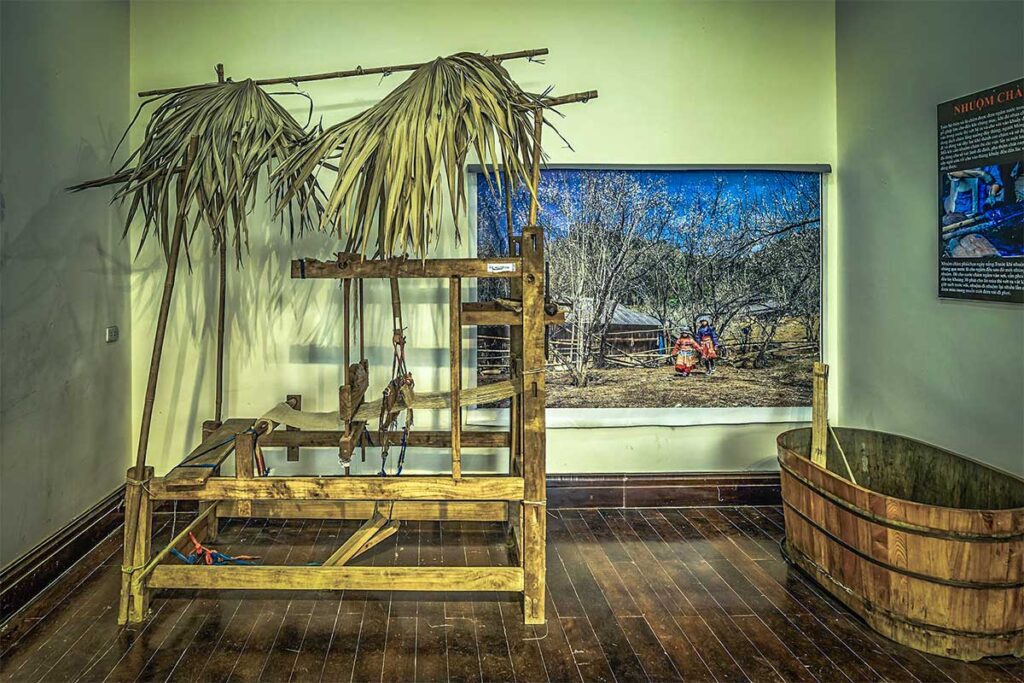
Inside, some rooms feature small displays about Bac Ha’s ethnic diversity and cultural heritage. You’ll find traditional costumes, local tools, and photographs, though signage is mostly in Vietnamese with only partial English translations. While not a full museum, the exhibits offer a glimpse into the local way of life and the palace’s place in regional history.
4. Live demonstrations (Occasional)
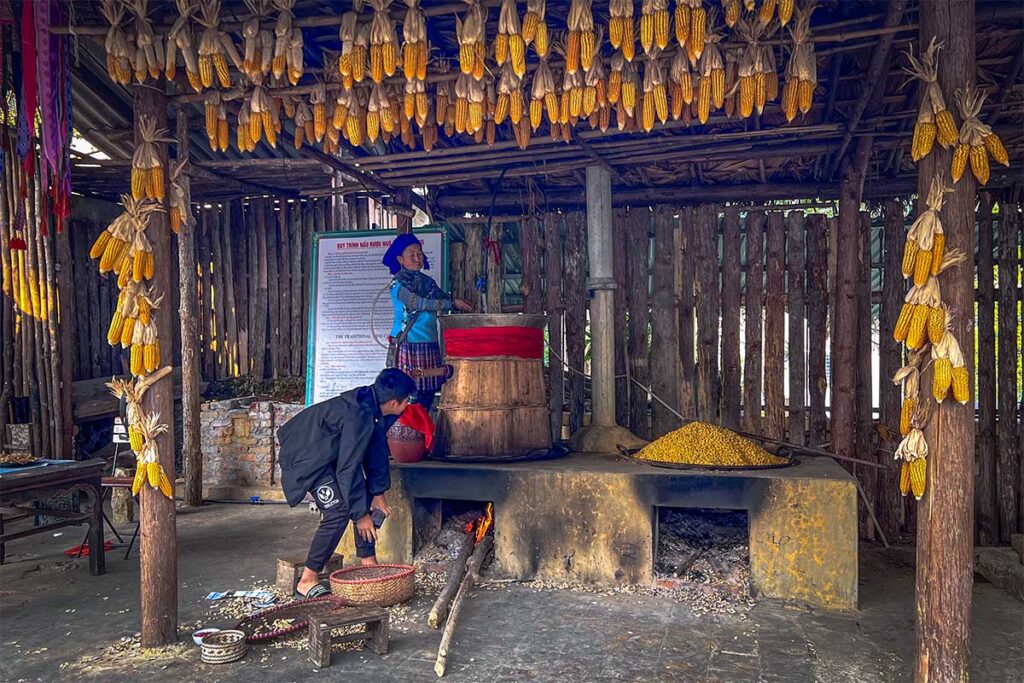
Depending on when you visit, you might catch local artists demonstrating traditional crafts such as textile weaving, painting on cloth, or making corn spirit—a regional specialty. These activities aren’t scheduled regularly, but they add an interactive element when available and help bring the site to life beyond its architecture.
Visiting information
Location
Hoang A Tuong Palace is located at 257 Ngọc Uyển Street, right in the center of Bac Ha Town, Lao Cai Province. It’s within easy walking distance from the Sunday market and most local guesthouses, making it a convenient stop during your time in town.
Opening times
The palace is open daily from 8:00 AM to 5:00 PM.
Entrance fee
- 20,000 VND per adult
- 10,000 VND for children aged 6–16
- Free for children under 6 and visitors eligible for local policy discounts
Travel tip: Bring cash—payment by card is not available.
Is Hoang A Tuong Palace worth a visit?
Hoang A Tuong Palace isn’t a reason to travel all the way from Sapa or Hanoi on its own, but if you’re already in Bac Ha—especially for the Sunday market—it’s absolutely worth adding to your itinerary. It offers a nice change of pace from the lively market, mountain views, and rice terraces, and helps make your trip to Bac Ha feel more complete.
Other sights nearby
Most travelers visit Hoang A Tuong Palace as part of a broader Bac Ha trip. If you’re spending more time in the area, here are some other places worth checking out.
In Bac Ha Town
- Bac Ha Market – One of the biggest ethnic markets in Vietnam, held every Sunday morning. A lively place to see local culture, trade, and traditional clothing.
- Bac Ha Temple – A small, quiet temple near the walking street, dedicated to local military heroes from the region’s past.
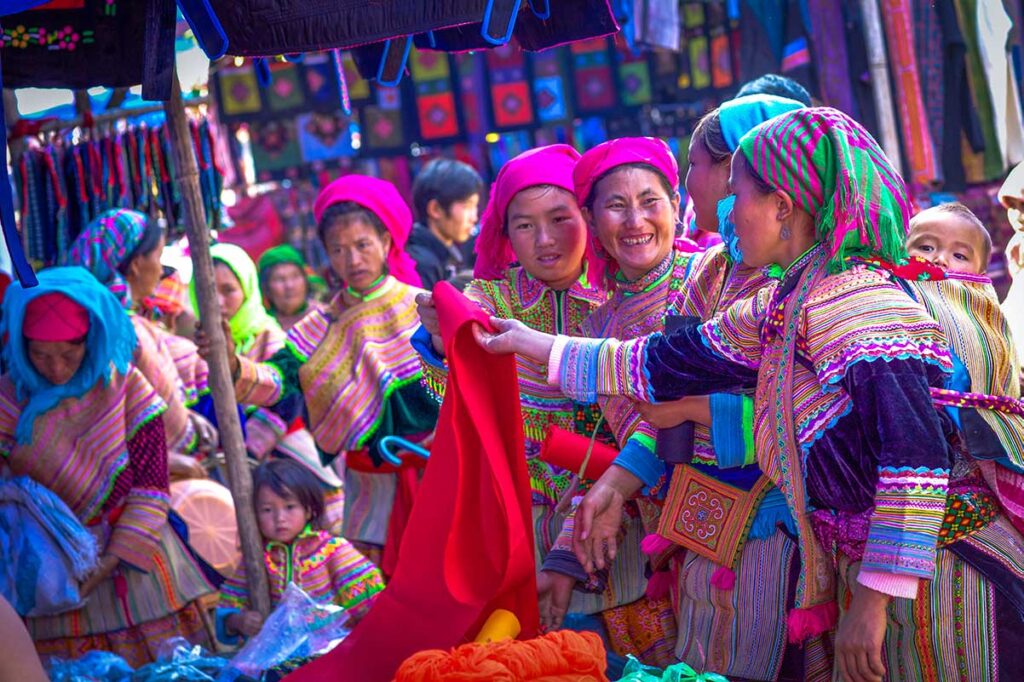
Around Bac Ha Region
- Coc Ly Market – Scenic market by the river, held every Tuesday. Known for its relaxed setting and mix of ethnic groups.
- Lung Phin Market – Held on Saturdays, this market is smaller and less touristy, offering a more authentic feel.
- Trekking – Bac Ha is a great base for light trekking through ethnic minority villages and terraced landscapes.
- Ta Van Chu Village – A peaceful Flower Hmong village where you can see traditional homes and daily life.
- Ban Pho Village – Just outside town, known for producing corn wine and offering local-style homestays.
